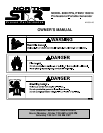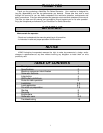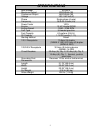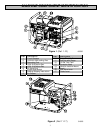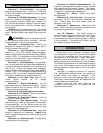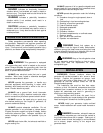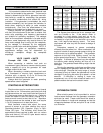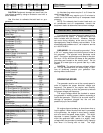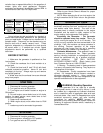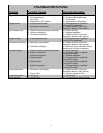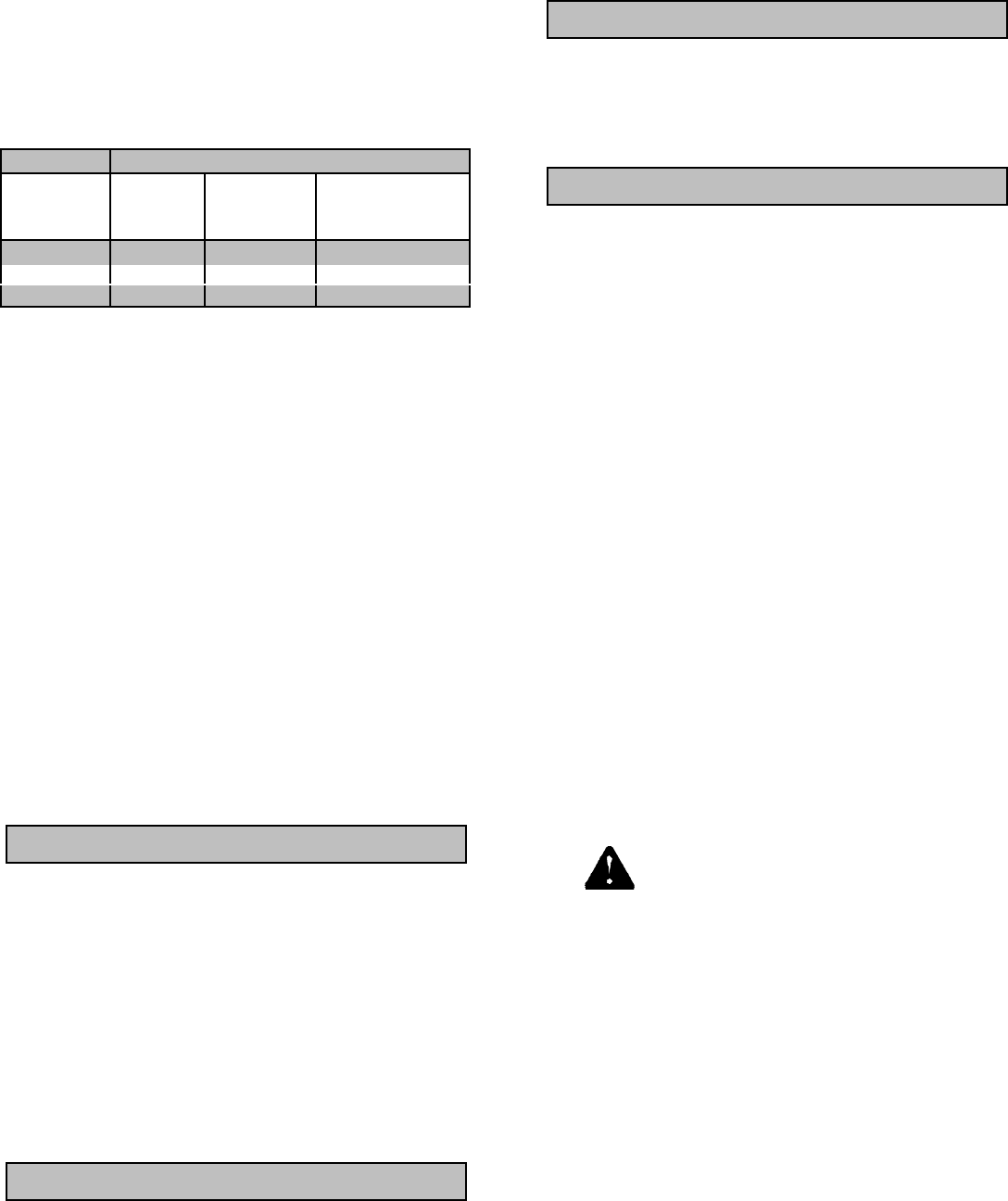
8
variation has no appreciable effect in the operation of
motors, lights and most appliances. Electronic
equipment and clocks will be affected if correct RPM is
not maintained. See Load vs. Output chart.
Load Output
Percent of
Generator
Output
Speed
(RPM)
Frequency
(Hz)
Generator
Voltage at 120V
Receptacle
0 % 3750 62.5 129V
50 % 3600 60.0 120V
100 % 3510 58.5 112V
Output voltage should periodically be checked to
ensure continued proper operation of the generating
plant and appliances. Voltage can be checked with a
portable meter. Frequency can be checked using an
electric clock with a sweep second hand. Timed
against a wristwatch or a stopwatch the clock should
be correct within +/- 2 seconds per minute. Speed
adjustments should be performed by a qualified
technician.
BEFORE STARTING
1. Make sure the generator is positioned on firm
l evel surface.
2. Check the crankcase for oil and maintain at a
proper level.
3. Check fuel level and fill tank 7/8 full with fresh
unleaded automotive gasoline. Never fill fuel tank
completely to the top. Always wipe up and remove
any spilled gasoline.
4. Make sure that the exhaust fumes are directed
away from people.
STARTING
1. Disconnect all loads to generator.
2. Turn gas line valve to ON position.
3. Turn engine on-off switch located on engine to
ON position.
4. For cold engine, move choke lever to full choke
position, for warm engine, move choke lever to half
choke or to RUN position.
5. Grasp recoil handle and pull.
6. When engine starts, move choke lever to RUN
position.
7. Loads may now be connected to generator.
STOPPING
1. Disconnect all loads to generator.
2. Place engine on-off switch to OFF position.
3. Turn gas line valve to OFF position.
ENGINE CARE
Refer to your Honda Owner’s Manual for proper
care and maintenance.
NOTE: When changing the oil on a hot engine, the
oil might overshoot the oil drain hole on the generator
base.
GENERATOR CARE
The generator head is a 2-pole, 3600 rpm, 60 Hz,
brushless, revolving field and synchronous type with
one sealed radial roller bearing. The rotor of the
generator head is directly connected to the engine
crankshaft and the stator is rigidly coupled to the
engine casting via the generator head casting.
Exercising the Generator - The generator
should be operated every four weeks. Warm the
unit by running the engine for 10 to 15 minutes. This
will dry out any moisture that has accumulated in the
windings. If left, this moisture can cause corrosion in
the winding. Frequent operation of the engine
generator will also ensure that the set is operating
properly should it be needed in an emergency.
Generator Maintenance - The generator head is
brushless and maintenance free. Major generator
service, including installation or replacement of parts
should be performed only by a qualified electrical
service technician. USE ONLY FACTORY
APPROVED REPAIR PARTS. Obtain factory parts
from Customer Service at 1-800-270-0810.
A. Bearing - The bearing used in these generators
is a heavy duty sealed roller bearing. They require no
maintenance or lubrication.
B. Receptacles - Quality receptacles have been
utilized. If a receptacle should become cracked or
otherwise damaged, replace it. Using cracked or
damaged receptacles can be both dangerous to the
operator and destructive to the equipment.
WARNING, Stand-by Operation
If your generator is to be used as a standby
electric power source in case of utility failure, it must
be installed by a registered and licensed electrician
and in compliance with all applicable state and local
electrical codes. Also, local Fire Departments must be
consulted concerning proper and safe handling
procedures for gasoline. NEVER connect any
generator to any existing electrical system without an
isolating, UL approved transfer switch, installed by a
licensed electrician.



